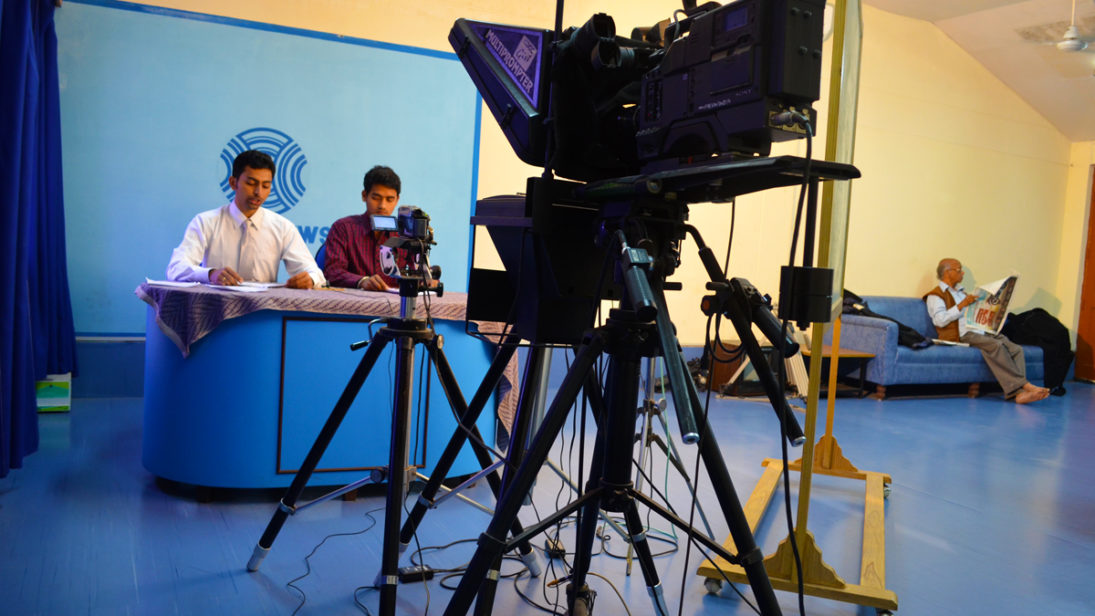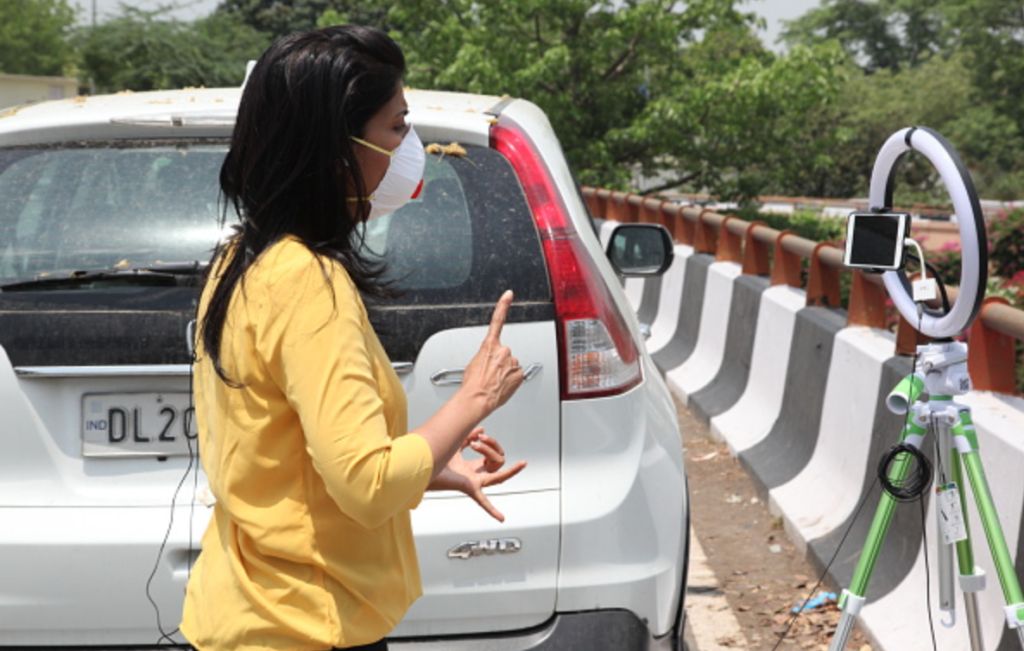
India’s state-owned broadcaster, Doordarshan, is set to embark on a global expansion with a new Doordarshan International broadcasting channel, as per a recent Expression of Interest (EoI) by Prasar Bharati, India’s Public Service Broadcaster. The government is inviting project report bids from the private sector with the following stated objectives: “to tell the India story to a global audience” and “to project India’s point of view globally on contemporary issues of both global and domestic significance.”
The initiative is seemingly spurred by the recent spate of negative coverage over India’s failure to cope with the second wave of COVID-19. However, some sources indicate that establishing an international public broadcasting service had been underway before the second wave began. Either way, introducing an international broadcasting service indicates a reorientation in India’s strategic international posturing by emphasizing international image management as a key component of its foreign policy.
Global media outreach has strategic utility for states to highlight their interests and shape narratives in the international system through public diplomacy. They are a tool to instrumentalize soft power projection, as well as shape opinions abroad. Major powers have integrated international broadcasting services as a vital components of their public diplomacy. The United States (VOA), United Kingdom (BBC), China (CTGN), and Russia (RT), among others, benefit from established global media houses.
India must rectify the causes behind growing concerns over press freedoms…while ensuring that Doordarshan International does not become a vehicle for the ruling party’s propaganda.
With India’s global aspirations, Doordarshan International’s launch may be long overdue. However, the initiative’s success in emboldening Delhi’s public diplomacy apparatus will ultimately depend upon how effectively Delhi can address specific domestic fault lines. India must rectify the causes behind growing concerns over press freedoms, arbitrarily quashing dissent within civil society, upholding its political ideals, while ensuring that Doordarshan International does not become a vehicle for the ruling party’s propaganda. Until these fault lines remain unaddressed, Doordarshan International will struggle to establish itself as a credible platform for India’s international public diplomacy.
Fault Lines in India’s Current Image Management Approach
Shrinking press freedoms and increasing governmental interference in journalism raise questions over Doordarshan International’s editorial independence. Global audiences saw troubling incidents of state interference during the COVID-19 pandemic. For example, the government dismissed The Australian’s report on India’s failure to manage the second wave, calling it “baseless, malicious, and slanderous.” The government claimed that no reported deaths resulted from a lack of oxygen, contradicting numerous reports showcasing oxygen-related deaths on mainstream and social media. The decision to arrest dozens of journalists covering stories related to the government’s COVID-19 response showcased the deepening erosion of India’s civil liberties and media freedoms. India’s knee-jerk rhetorical responses were undermined not only by the Supreme Court, which criticized the government and bureaucratic machinery for mismanagement, but the objective reality of a virus that has (so far) officially killed over 430,000 people. In such a domestic landscape, neither domestic nor foreign observers can take Doordarshan International’s reputational credibility for granted.
Shrinking space for civil liberties negatively impacts India’s foundations as a democracy, which—along with international broadcasting services—is one of several dimensions in successful public diplomacy. Shared political values and ideals, such as democratic credentials, liberalism, and individual rights, are established lenses that shape public opinion, allowing audiences to understand and judge a modern state’s policies and ambitions. Undermining democratic ideals and critiques on India’s failure to uphold democratic values will deter global audiences from giving Doordarshan International the credibility it needs to claim its place in the comity of credible international broadcasting services.

India should exercise caution in flatly dismissing reports and suppressing voices critical of the government. While the government may be tempted to whitewash their actions and manufacture “positive” image management stories, global audiences and international media spaces will contest India’s defensive posturing and unqualified claims if they do not align with reality. Even if the government tried to disseminate unqualified “positive” narratives of its governance through an international broadcasting service, it would hardly succeed due to citizen journalism in the age of social media. No amount of rhetorical image management can succeed in public diplomacy initiatives if the ground reality does not align with image projection. Substantive work that prioritizes action over rhetoric is needed to resolve domestic fault lines before Doordarshan International can establish itself as a trusted voice.
Ensuring Effective Public Diplomacy
The effectiveness of India’s public messaging is tied to how successfully India can establish Doordarshan International as an independent global media organization rather than a mouthpiece for state-run broadcasting. Its credibility and integrity necessitate strict insulation from the ruling government against using the platform to shape domestic politics. Politicizing the platform makes it highly susceptible to becoming a channel for the ruling government’s propaganda. Consider the differing general public perception of the BBC and CTGN. Whereas the BBC has earned sizable credibility and trust in international broadcasting, CTGN’s independence has often been called into question because of its close association with the Chinese government. Successful persuasion and earned credibility require dispelling public distrust over close government involvement in broadcasting.
The effectiveness of India’s public messaging is tied to how successfully India can establish Doordarshan International as an independent global media organization rather than a mouthpiece for state-run broadcasting.
By recognizing that state involvement in an international broadcaster’s affairs may undercut credibility, India should be wary of its hand in Doordarshan International’s operational and editorial independence. The merit of such an approach also lies in the fact that providing truthful, objective, and authentic news can help India garner favorable international attention. Earning credibility and trust through objective reporting—as opposed to state-sponsored image management campaigns—will help attract foreign audiences towards India’s narrative, allowing Doordarshan International to serve as an effective public diplomacy tool.
Finally, while the BJP government projects its majoritarian ethnonationalist, Hindutva-image in domestic politics, it desires to maintain a strong secular, multi-cultural image internationally. This disjuncture cannot sustain itself in public diplomacy because both policies are inherently conflicting. The government pursuing its Hindutva ideology in domestic politics has often come at the cost of its international reputation. Any government attempt to use Doordarshan International to project its domestic political agenda on a global audience will only damage India’s stated public diplomacy goals. In India’s deeply divided domestic political landscape, unilaterally pushing the ruling party’s domestic agenda through an international broadcasting service can potentially trigger strong pushback from within the country and from the diaspora abroad. The government must synthesize India’s national and international image as mutually reinforcing political objectives — instead of bifurcating them — to make the most gains in its public diplomacy approach.
Conclusion
Launching an international broadcasting service is an important step towards bolstering India’s strategic communication and public diplomacy apparatus. However, India must address critical points before laying down the framework and strategic direction for the platform. First, addressing growing state influence on the media, shrinking space for civil society, and gaps between democratic ideals and governmental action are crucial in ensuring that Doordarshan International maximizes the platform’s utility for Delhi’s public diplomacy. Second, Doordarshan International should ensure insulation from governmental influence or control through strictly enforced editorial standards. Lastly, the Indian government’s domestic political agenda of promoting Hindutva policies, coupled with the country’s international image of being a pluralistic, secular democracy, simply do not align. Creating a cohesive narrative, earning the credibility of global audiences, and strengthening India’s public diplomacy efforts require addressing this fundamental contradiction.
***


